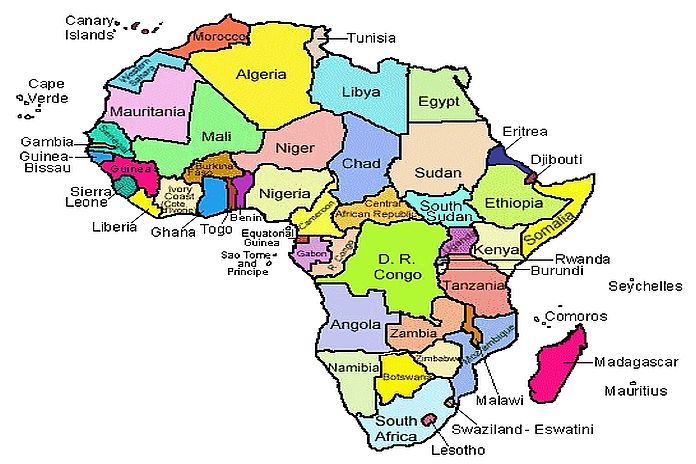One year into the COVID-19 crisis, African countries in Eastern and Southern Africa have been spared the brunt of the pandemic, having recorded 2.1 million cases compared to, for example, close to 20 million in Latin America despite similar size populations. This is a testament to the region’s early and decisive measures to contain the spread, but also a likely result of a youthful population (on average 40 percent of the population is younger than 15) and lower urbanization rates (around 34%).
However, as we look ahead at the challenges for the region in the post-COVID phase, the outlook is far from rosy because to a large extent the pandemic is amplifying four key development challenges that the region was already facing. The first is on the growth front, given that the region was already experiencing declines in economic growth that go back to 2010. The second is related to the high rates of income inequality, which the pandemic is likely to further increase as quarantine measures continue to hamper economic activity. The third hurdle is the region’s significant exposure to vulnerabilities, particularly in the form of natural disasters, conflict, and food insecurity. And fourth, all this at a time when countries possess limited fiscal buffers to react and rely on a fiscal expansion to get out of the crisis.
Economic growth in Eastern and Southern Africa has been steadily declining since 2010, and in fact, in 2016, 2018 and 2019, growth was actually negative on a per capita basis. In 2020, regional GDP is estimated to have declined by between 4.4 and 5.4 percent (6.8 and 7.8 percent on a per capita basis), and in 2021, it is expected to rebound by between 1.6 and 3.4 percent (-1 and .9 percent on a per capita basis). These numbers indicate that it is not just a question of ensuring an economic recovery from the impact of the pandemic, but rather more importantly, how to ensure that structural growth rates increase. This will require actions that help diversify economies away from commodities, along with an expansion of access to electricity (around 40 percent in many countries) and access to internet (in the 20 percent range) to compete in the global economy.
In addition to declining growth, Eastern and Southern Africa continues to face gaping wealth inequalities that are only set to increase as the pandemic draws on. Large swathes of the population in Eastern and Southern African countries have seen their incomes evaporate as their work in the informal sector or lower-skilled jobs has been severely impacted. This is particularly true for women, with gender inequalities widening even further as women have had to trade income-generating activities for household responsibilities or attempt to juggle both unsustainably.
Tackling this inequality starts with fair, broad, and fast access to effective and safe COVID-19 vaccines. This is why the World Bank has launched a $12 billion global facility to help developing countries purchase vaccines, set up vaccination systems, and move quickly to vaccinate their people so that they can safely get back to work.
Looming over the pandemic crisis is also the region’s exposure to a combination of natural disasters (e.g. recent cyclone hits in Mozambique and Madagascar), the worst locust infestation in decades (which in turn may be related to climatic factors), and the impact of armed conflict in several countries. COVID-19 and climate change are the existential challenges of the century, making it critical that all recovery efforts are climate-resilient and contribute to greener development pathways. Thus, the region will need to recover from the pandemic in a context where other potential negative factors are present. In this regard, among other aspects, additional attention to climate change adaptation is warranted, and a more urgent horizon to food security.
Finally, this is all happening at a time where fiscal constraints are surfacing and risk choking COVID-19 response efforts. Even before taking into account the impact of COVID on fiscal balances (estimated at -9 percent of GDP in 2020 and currently projected at -6.3% of GDP in 2021), Eastern and Southern African countries were experiencing increasing signs of debt distress, and one country (Zambia) has already defaulted on its debt. The region needs to plan now for how it will address existing fiscal imbalances so that we put measures in place that may kick in following the aftermath of the pandemic.
It will also be important to improve investment climate indicators so that countries can attract private investment (Eastern and Southern Africa is the region where it takes longest to start a business) to offset the impact of fiscal consolidation efforts. Moreover, additional private sector efforts could also be considered at the center of any diversification strategy.
An easy path ahead? Not at all. Yet, a huge opportunity to reset and build back better … and greener. Our forthcoming blog series will delve deeper into each of these four ingredients for a sustainable recovery and emphasize how we can we support countries in Eastern and Southern Africa to overcome the greatest challenges of this century and enable their people to lead healthier, safer and more prosperous lives.
Humberto Lopez, World Bank Director of Strategy and Operations for Eastern and Southern Africa. This op-ed first appeared in The East African, March 19, 2021.





